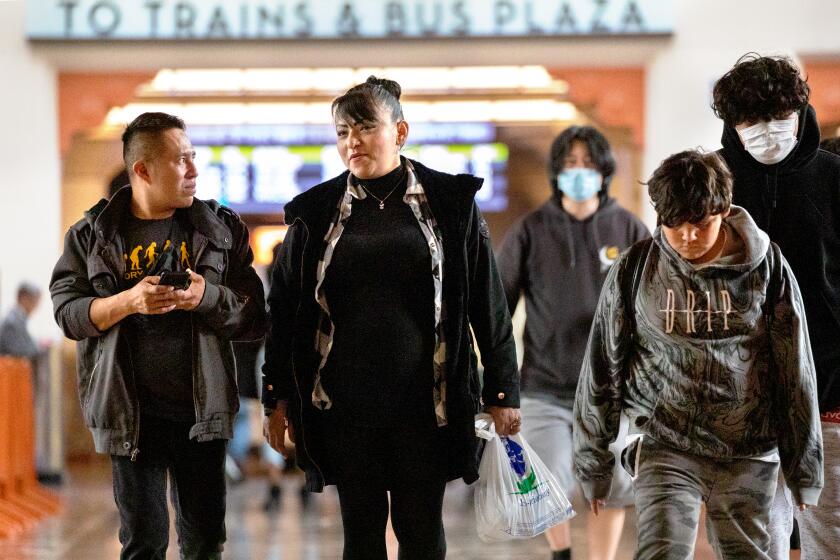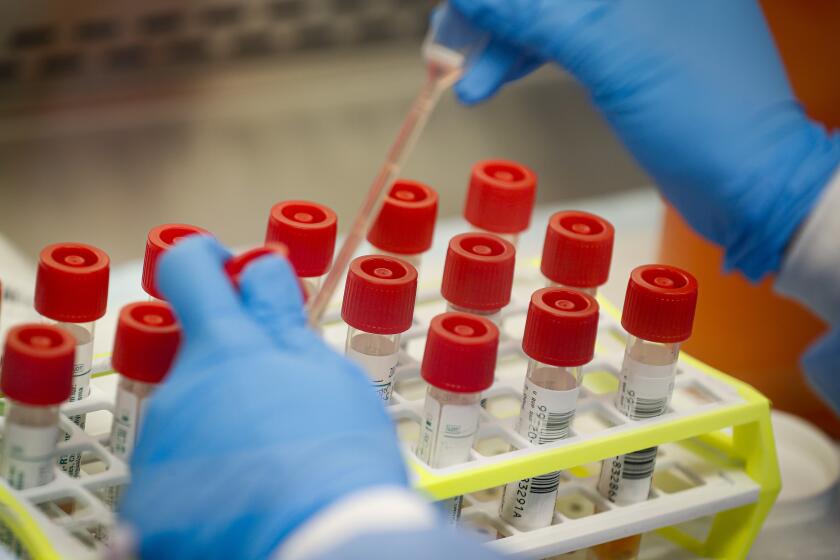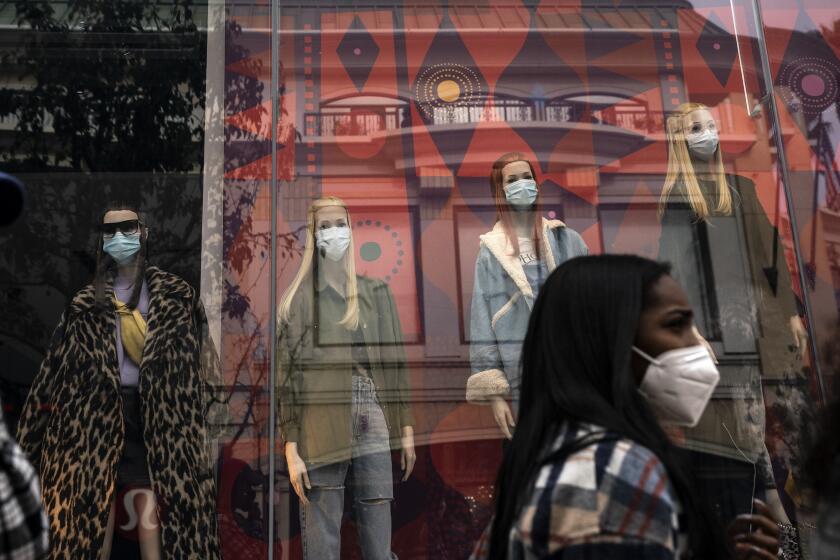Could Fourth of July trigger a summer COVID-19 surge? What L.A. County data show

- Share via
Summer has been a fraught and cautious time in the pandemic era, with travel and gatherings for holidays and vacation fueling COVID-19 spikes each of the last three years.
Could the fourth time be the charm?
This year marks the first summer of the post-emergency phase of the pandemic — a distinct new chapter marked not by breathless warnings from public health officials about a looming threat, but gentle reminders of well-worn safety tips.
Assessing the wide COVID landscape has never been more challenging, given the dearth of data. But at least in Los Angeles County, there are hopeful signs this summer will be a trend-breaker.
“Like many people, I am looking forward to the summer months and plans with family and friends. More than anything, I hope that our numbers remain low and that we start to see a new pattern of COVID-19, with more predictability and fewer surges,” county Public Health Director Barbara Ferrer said in a recent statement.
The CDC now estimates XBB sublineages comprise nearly 99% of circulating coronavirus in the U.S., displacing the BA.5 subvariant that dominated the nation for much of last year.
In 2022, coronavirus case rates in L.A. County climbed in April and May and swelled further before peaking in late July. As the summer solstice arrives this year, however, there is no sign of a similar increase thus far.
The levels of coronavirus in L.A. County’s wastewater is just 17% of the previous winter’s peak, a concentration that has remained roughly stable since the start of spring. The average number of coronavirus-positive people in L.A. County’s hospitals also has continued to decline or hold stable at relatively low levels.
L.A. County reported 36 COVID-19 deaths for the most recent week where data are available, a figure that remains relatively stable and low.
That is about the level that would mark a relatively reassuring death rate for Los Angeles County. In January, Ferrer said a rate of around 35 deaths a week might still be difficult to accept — especially because many are now largely preventable with vaccines — but would nonetheless represent stability and “indicate that our protections are really working extraordinarily well.”
Confidence in the scientific community declined among U.S. adults in 2022, driven by a partisan divide that emerged during the COVID-19 pandemic, according to a major survey.
Last winter, L.A. County’s weekly COVID-19 death toll peaked at 164.
The all-time pandemic peak was 1,625 deaths during a one-week period in mid-January 2021, a time when hospital morgues were overflowing. During the first Omicron surge, the weekly peak in deaths was 513, recorded in early February 2022.
L.A. County’s cumulative COVID-19 death tally is 36,460.
“Across Los Angeles County, it feels a lot like it did before COVID,” Ferrer said in a statement. Still, she said, it’s prudent to take commonsense measures to reduce risk.
The end of the federal government’s health emergency has left COVID-conscious Americans feeling vulnerable. Here are some steps you can take to protect yourself.
Activities such as travel are now less risky. “But they are not no-risk, especially for people who are older or immunocompromised. Incorporating simple measures, such as handwashing and testing, can help keep each other safe and make for an enjoyable summer,” Ferrer said.
Measures to reduce infection risk could include avoiding sick people and wearing a mask on a plane where people are coughing.
When hosting summer gatherings, infection risk can also be reduced by holding events outdoors or ensuring robust ventilation indoors by keeping windows and doors open.
People who experience COVID-19 symptoms should get tested and seek medical advice to determine whether they are eligible for free anti-COVID drugs, such as Paxlovid, which can reduce the risk of severe illness and death in high-risk people. Paxlovid and other anti-COVID medicines work best when taken soon after symptoms begin.
Health officials also continue to urge people to get up to date on COVID-19 vaccinations. Of an estimated 1.37 million L.A. County seniors, only about 547,000 have received an updated “bivalent” COVID-19 vaccine shot since September, when the inoculation formula was changed to match more recently circulating strains.
The U.S. Centers for Disease Control and Prevention recommended the allowance of an additional updated booster for seniors 65 and older as well as those who are immunocompromised.
Seniors and immunocompromised individuals became eligible for a second bivalent shot in April. More than 57,000 L.A. County seniors have received at least two bivalent COVID-19 vaccination doses.
Californians who don’t have insurance or are having a hard time getting a prescription for anti-COVID medication can make a free phone or video appointment through the state’s COVID-19 telehealth service, reachable through sesamecare.com/covidca or by calling (833) 686-5051.
L.A. County has similar free telehealth services, which are accessible at (833) 540-0473. Free at-home COVID tests also can still be picked up at county libraries and vaccination sites operated by the county Department of Public Health, as well as at many food banks and senior centers.
Most insurance plans in California are still required under state law to reimburse insured people for the cost of eight at-home COVID tests for every covered person monthly.
One in 10 people infected with the coronavirus during the Omicron era suffered from long COVID, indicating the syndrome remains a notable threat.
Though the likelihood of severe illness and death from COVID-19 has plummeted since the darkest days of the pandemic, health officials warn that infections are not without risk.
Preliminary data from a study published in May suggested 1 in 10 people infected with the coronavirus during the Omicron era suffered from long COVID.
Many people see long COVID symptoms improve over time, but for some, long COVID can result in permanent disability.
Symptoms linked to the syndrome include fatigue, dizziness, brain fog, gastrointestinal symptoms, heart palpitations, changes in desire for or capacity for sex, loss of smell or taste, excessive thirst, chronic cough, chest pain and abnormal movements.
More to Read
Sign up for Essential California
The most important California stories and recommendations in your inbox every morning.
You may occasionally receive promotional content from the Los Angeles Times.




















